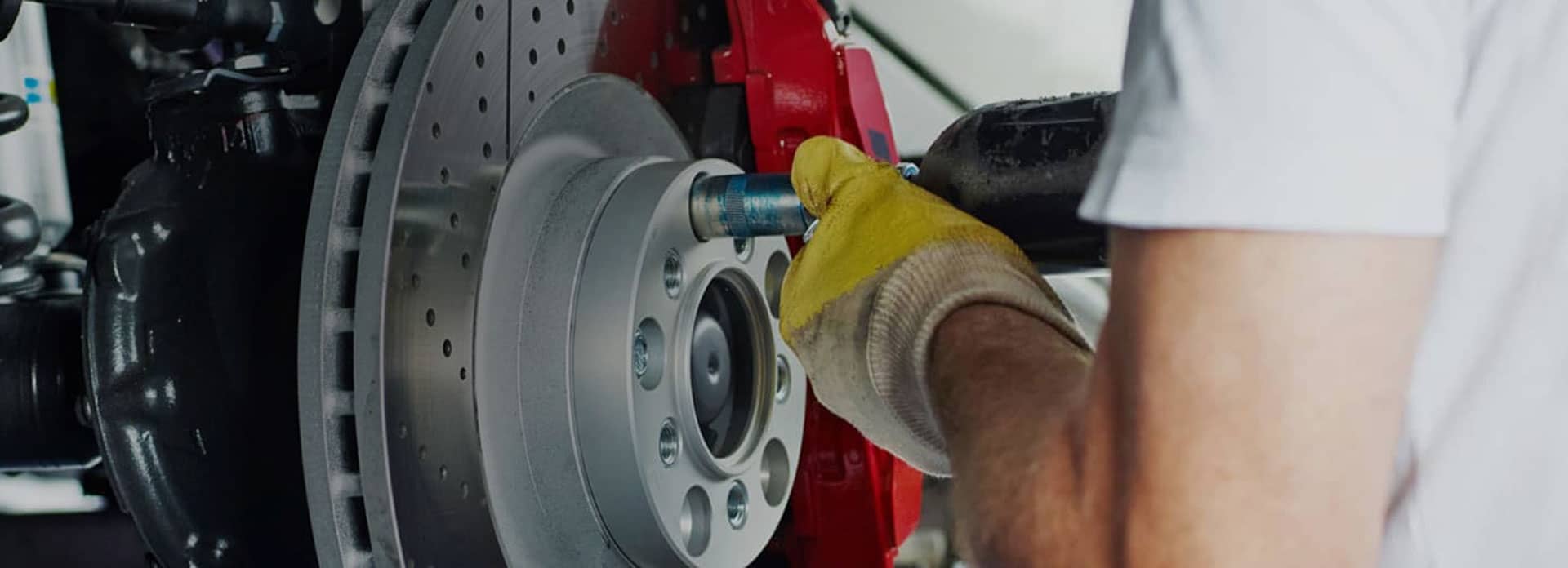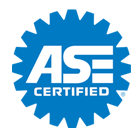
AUTONET TV
Archive for January 2022See the Light (Automatic High Beam Dimmers)Posted January 30, 2022 8:04 AMIt's happened to all of us. We're driving down a highway at night and over a crest appears a car with its high beams blazing. You are momentarily blinded, hoping the other driver will switch them to their low beam setting and restore your vision. Not only do we not appreciate being blinded, face it; we don’t want to be that other driver, either. You know, the one who forgets to turn down their high beams. Why do we want high beams in the first place? They can improve safety when used correctly, giving drivers more reaction time since they can see farther down the road. But research has found many drivers either don't use them or, when they do, they frequently forget to switch to low beams. Enter the automatic high-beam dimmer. The quest for the perfect one began back in the 1950s, General Motors invented something it called the "Autronic Eye." It was a phototube which sat on the dashboard and turned down your beams when it saw other headlights. While touted as being the biggest advance in night driving safety in 30 years, it didn't work all that well. But as technology got more advanced, systems improved. Today's automatic high beam dimmers usually have a camera in the rear view mirror (pointing forward). When the camera sees lights, software in the system's computer attempts to determine the source of the light, whether it is an oncoming vehicle, taillights, ambient city lights, street lights or the reflection off of a street sign. It then adjusts the headlights to operate high beams if appropriate or a less-blinding mode if they’re not. Some automakers are striving to make their headlight systems smarter and safer by developing lamps that can avoid blinding oncoming drivers by means other than simply dimming them. One idea? Splitting the beams so they will block just the portion that shines into the eyes of oncoming drivers. It's a long way from the Autronic Eye. A.G. Automotive & Diagnosis Automotive Tips from A.G. Automotive & Diagnosis: Making Your A/C System Last LongerPosted January 23, 2022 8:59 AMWinnetka drivers know that if their air conditioning system isn’t making cool air like it used to, there is a problem. It may be as simple as adding more of the right kind of refrigerant. I Had No Idea! (Four Things You Didn't Know About Vehicles)Posted January 16, 2022 12:00 PMBet you didn't know: Some of the earliest rearview mirrors were marketed as "Cop Spotters" so drivers would know when police were following them. Who wants a ticket, anyway? According to eBay Motors, Elmer Berger first patented a rearview mirror that was mounted on the front fenders, on the spare tire secured to the side of the car of at the top of the driver's door frame. About 80 percent of your vehicle is recyclable. So says The Balance. That means four-fifths of most vehicles can be recycled. Much of that recycling is done by automotive aftermarket recyclers. Between the U.S and Canada, they reclaim enough steel to produce 13 million new vehicles. The man who invented the first modern cruise control couldn't even drive a car because he was blind! His name, says Smithsonian.com, was Ralph Teetor. Blinded at a young age by a knife accident, Teetor was inspired to create a speed control by a couple of things. One, the U.S. imposed a mandatory 35 mph/55 kph during World War II to conserve fuel and tire rubber, and Teetor wanted drivers to go a safe and steady speed. Plus, a chauffeur who drove him around used to randomly slow down and speed up which irritated Teetor. So he invented a speed control to encourage drivers to drive at a more constant and safer speed. The first grooved tires were invented in 1904 by Continental. But that was a big improvement over the very first "tires" which were actually metal hoops that made riding in the first cars a pretty rough experience. The first rubber tires were solid rubber, not inflatable like today's tires. Things have come a long way. Modern tires are made with sophisticated rubber compounds that can deal with heat and cold. Plus their tread patterns help drivers get better traction on wet roads when it storms. Still, it's important to make sure yours have enough tread and are properly inflated for maximum safety and performance. Quite frankly, there's a lot we don't understand about the vehicles we drive. They're much more complicated than the old horse and buggy that preceded them. Leave your vehicle's maintenance and service to highly trained technicians who DO understand how to maintain, diagnose and repair today's modern, sophisticated vehicles. A.G. Automotive & Diagnosis When Do My Shocks Need to Be Replaced?Posted January 9, 2022 10:33 AMA good suspension system gives a vehicle a smooth, even ride while providing Winnetka drivers with good handling and control. But like any system on your vehicle, parts of the suspension system can wear out, leading to a lower ride quality and safety concerns. So it's a good idea for drivers in Winnetka to remember their suspension system in their schedule of preventive maintenance. Springs do most of the work of the suspension system. The most common types of springs are coil and leaf, but air springs and torsion bars are becoming more common. The body of the vehicle is “suspended” by the springs. A.G. Automotive & Diagnosis
Greeted by a Screech (Loud Noise when Starting Vehicle)Posted January 2, 2022 10:26 AMNo one likes to be greeted in the morning by having someone screech at you. The same goes for a loud, high-pitched noise your vehicle greets you with every time you start the engine. If you're wondering if that's normal, no, it isn't. And it is worth getting checked out. The good news is that it might be nothing serious. Then again, it may be. The first things to suspect any time you hear a high-pitched sound coming from the engine are belts. They have tension on them and they're trying to turn lots of different pulleys, pumps and other equipment the engine needs to work properly. The noise could come from the belts starting to wear out and dry out. If one of those belts breaks at an inopportune time, not only can it strand you somewhere, the damage to the engine could be very expensive to fix. Other things that will cause a high-pitched sound are the pulleys and tensioners. The tensioners keep the right amount of pressure on the belts and some pulleys contain rubber that dampens engine vibrations. The rubber in the pulleys can crack or deform with age, which prevents them from working correctly and may cause your belts to wear out. A technician will check to see if the belts are worn or cracked. He or she will also check the tension on the belts, the condition of the pulleys and whether all components are aligned the way they should be. Sometimes, the noise is nothing major to worry about, but it's still worthwhile to rule out any problems that have cropped up now or may appear in the future. You'll have a properly running vehicle that sounds like its engineers intended… quiet and smooth.
Lean Times (Shocks and Springs)Posted January 1, 2022 9:07 AMYou may have noticed your vehicle going through lean times. By that, we mean it's literally leaning to one side. When you notice that, you should get it checked out at your service facility soon because you could have a serious problem. Many things can cause a vehicle to lean. You may have problems with your struts, shocks or springs. They all work in tandem to make your ride more comfortable. The struts bear the weight of the vehicle's body, the shock absorbers employ a piston that keeps your tires in contact with the road and controls movement of the vehicle's body. Springs also absorb impacts from uneven road surfaces. If these components get stuck, either too high or too low, they cause your vehicle to lean. That's because that side of the vehicle isn't at the height it is designed to be. A technician will determine where the problem is. Outside elements such as moisture plus hard knocks to these components can weaken them, eventually resulting in a failure. The metal can get so fatigued that it breaks. Often when one side of a vehicle is too high or too low, your service advisor will advise you to have the other side done as well. That's because if only one side has new parts installed, it won't be level with the side that has old parts. There are a couple of other reasons vehicles can lean. One is that the suspension can be bent or the chassis twisted, again due to wear and tear by driving on rough roads, over badly maintained railroad tracks or in deep potholes. Another reason your vehicle may lean is that the tires and/or wheels aren't all the same size. Or one side might have drastically over or underinflated tires. This can be a dangerous condition since the imbalance can affect steering and handling. Considering what drivers put suspension parts, tires and wheels through, it's not surprising that they can be punished so much that they don't hold up like we want them to. A level-headed driver will make sure to be driving a level vehicle by making sure these components are maintained in good condition. A.G. Automotive & Diagnosis | ||
SearchArchiveMay 2019 (16)June 2019 (5) July 2019 (4) August 2019 (4) September 2019 (5) October 2019 (4) November 2019 (4) December 2019 (5) January 2020 (5) February 2020 (4) March 2020 (5) April 2020 (4) May 2020 (5) June 2020 (4) July 2020 (4) August 2020 (5) September 2020 (4) October 2020 (4) November 2020 (5) December 2020 (4) January 2021 (6) February 2021 (4) March 2021 (4) April 2021 (4) May 2021 (5) June 2021 (4) July 2021 (4) August 2021 (5) September 2021 (4) October 2021 (5) November 2021 (4) December 2021 (4) January 2022 (6) February 2022 (4) March 2022 (4) April 2022 (4) May 2022 (5) June 2022 (4) July 2022 (5) August 2022 (4) September 2022 (4) October 2022 (5) November 2022 (4) December 2022 (4) January 2023 (5) February 2023 (4) March 2023 (4) April 2023 (5) May 2023 (4) June 2023 (4) July 2023 (5) August 2023 (4) September 2023 (4) October 2023 (5) November 2023 (4) December 2023 (5) January 2024 (5) February 2024 (4) March 2024 (5) April 2024 (3) | CategoriesHeadlamps (5)Maintenance (25)Auto Safety (4)Service Standards (5)Cooling System (12)Cabin Air Filter (4)Safety (4)Diagnostics (3)Tires and Wheels (25)Timing Belt (5)Battery (7)Fuel System (24)Emergency Items (1)Brakes (11)Air Conditioning (7)Parts (2)Keys to a long lasting vehicle (2)Fuel Economy (6)Winter Prep (2)Steering (6)Dashboard (2)Alignment (9)What Customers Should Know (31)Exhaust (5)Shocks & Struts (5)Older Vehicles (1)Monitoring System (2)Service Intervals (3)Windshield Wipers (5)Alternator (1)Transmission (3)Serpentine Belt (3)Inspection (7)Automotive News (7)Fluids (10)Suspension (1)Check Engine Light (4)Differential Service (1)Winter Tires (1)Trip Inspection (3)Engine Air Filter (1)Safe Driving (1)Tire Rotation and Balancing (1)Fuel Saving Tip: Slow Down (1)Oil Change (2)PCV Valve (1)Tires (2)Warranty (1)Transfer Case Service (1) | |

OUR REVIEWS


CHIBUEZE JBI, 04/05/2024CHUCK IS THE MAN! HE KNOWS HIS MOPARS , I AM A RETURNING A-1 CUSTOMER, HIS ASSISTANT IN THE MORNING IS COURTEOUS AND FUNNY ?, TAMMY IS AWESOME ?? ALSO. #MOPARORNOCAR #SRT 8
join our team
We are currently on the lookout for the following:











